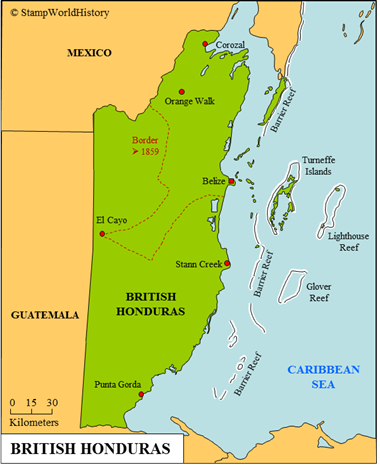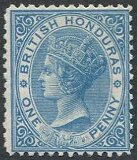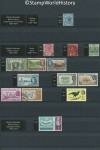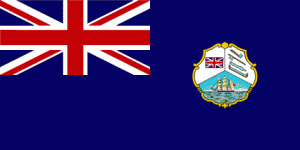
British Honduras
Quick reference
General issues: British colony/Dependency of Jamaica 1866-1884, British colony 1884-1964, British colony/Self government 1964-1973
Country name on general issues: British Honduras
Currency: 1 Shilling = 12 Pence 1866-1888, 1 Dollar = 100 Cents 1888-1973
Population: 42 000 in 1900, 132 000 in 1973
Political history British Honduras
British Honduras is located in Central America. Before colonization, the future British Honduras was inhabited by Amerindian peoples of Mayan descent. The Spanish explored British Honduras from Mexico in 1824 and claimed British Honduras for Spain. Although the territory was made a part of the Guatemala province of the Captaincy General of Guatemala, the Spanish did little to bring the territory under effective colonial administration.
In 1638, the British first settled in British Honduras. Treaties with Spain in 1763, 1783 and 1786 legalized the settlements. Forestry was the reason for the British settlements, first with a focus on logwood – used to dye clothes – and from the late 18th century with a focus on mahogany. Forestry being labor intensive, slaves were brought to the settlements until the abolition of slavery in the British Empire in 1833. The largely independent British settlers established a form of self government to govern the settlements. As a first step towards colonial rule, a superintendent was appointed in 1786, subordinate to Jamaica. In 1862, the settlements were made a British colony as a dependency of Jamaica. Also, in 1862, the name British Honduras was adopted. British Honduras was made a separate colony, administered directly by the Colonial Office in London, in 1884.
The borders of the British settlements had been defined by the 18th century treaties with Spain. The British, however, had settled well beyond these borders and in 1834 claimed a substantially larger territory. A treaty was signed with Guatemala – the successor of Spain after it had gained independence in 1821 – in 1859 that established the borders as we know them today. In the treaty Guatemala ceded the territory claimed by the British. As compensation the British would build a railroad connecting Guatemala to the Caribbean Sea through British Honduras. In 1940, Guatemala abrogated the agreement – based on the fact that the railroad had never been built by the British – and claimed the sovereignty over British Honduras. The dispute affected the road to independence of British Honduras and has yet to be settled. The borders with Mexico were formalized in 1893 along the lines of the treaties with Spain.
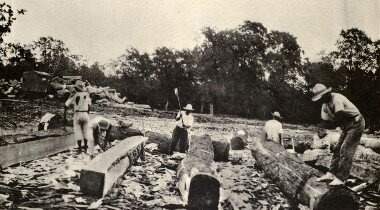
Loggers squaring mahogany around 1930.
The establishment of British Honduras as a colony attracted investors. The Belize Estate and Produce Company was formed in 1875. The Company would come to own over 50% of the privately owned land. The Company – solely focused on forestry – would dominate the economy until the mid 20th century. In the 1950’s, the economy was diversified by the development of agriculture as an important sector in addition to forestry.
In the 1930’s, the first steps were taken towards self government. The first general elections were held in 1954 and in 1964 self government was achieved. Independence was delayed because of the ongoing conflict with Guatemala over the sovereignty over the country. The country, in 1973, adopted the name of Belize and gained independence within the British Commonwealth in 1981. In view of the Guatemalan claims, a contingent of the British army stayed in Belize.
Postal history British Honduras
The British opened a branch office in British Honduras in 1857. British stamps were used at this office from 1858 to 1860. In 1860, the colony took over the office, using hand stamps until 1866 when the first stamps were issued for British Honduras. This first issue – and subsequent issues in 1872 and 1882 – shows the portrait of queen Victoria in the style common to the British colonies. The issues of the 1866 design were overprinted with new denominations when the dollar was introduce as the new currency in 1888. The issues in the 1890’s – and subsequent issues until the 1930’s – are of designs common to the British colonies. From the 1930’s until the 1960’s, stamps are issued of a design similar to that of other British colonies, but with themes related to British Honduras. In the 1960’s and 1970’s, the designs are specific for British Honduras. British Honduras participated in several of the omnibus issues for the British Empire. The last stamps were issued by British Honduras in 1973. These were superseded by the stamps issued as Belize.
Album pages
← Previous page: British GuianaNext page: Canada - Dominion →

